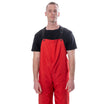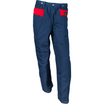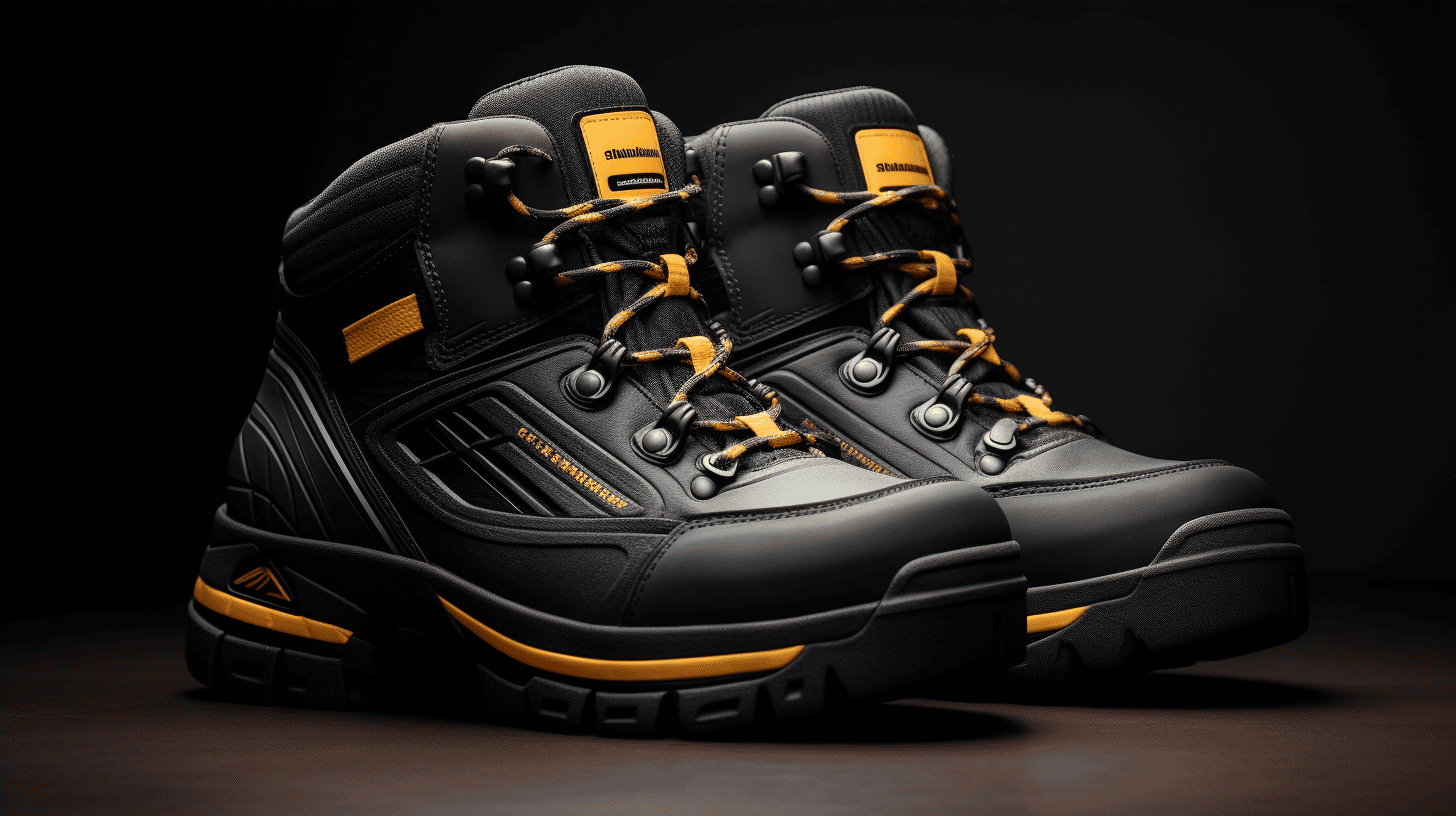The world is a rough-and-tumble place, bristling with unseen threats at every footfall. A simple stroll outdoors or a day at work could expose your feet to a host of potential hazards: jagged rocks, sharp tools, construction debris, and more. That's where puncture-resistant boots come in! These particular pieces of footwear are specifically designed to add an extra layer of protection to your feet, keeping them safe from injuries that could result from stepping on sharp objects.
In this article, we're setting out on a journey to explore the ins and outs of these boots. We'll delve into their intricate design, why they're critical in certain environments, the materials used to ensure they resist puncture, and even the global standards these boots have to meet. So, lace-up your curiosity and let's step into the world of puncture-resistant boots!
Understanding Puncture-Resistant Boots
Have you ever paused to consider how crucial a solid pair of work boots really is? Let's dive into a category that combines worker safety with efficiency: puncture-resistant boots. Not only are these boots marvels of design, incorporating innovative materials and engineering, they also provide an extraordinary level of protection for workers in hazardous environments. By exploring their design, we can better appreciate the craftsmanship that goes into their making, assuring both Safety and Comfort in Boots.
Definition
Puncture-resistant boots are specialized footwear designed to provide optimal foot protection against sharp objects like nails, shards of glass, and metal scraps that could possibly puncture a worker's foot. They're primarily used in construction sites, warehouses, factories, and other work environments notorious for such occupational hazards. However, their utility extends beyond the scope of conventional workplaces encompassing outdoor activities like hiking, where precarious terrains abound.
Here are the key features that set puncture-resistant boots apart:
- Steel Plate: Integrated within the shoe's sole, this element provides the core puncture resistance. The plate is often made of steel, but modern designs may incorporate lighter materials like Kevlar or aluminum.
- Reinforced Toe Cap: Most puncture-resistant boots also feature a steel toecap, offering additional protection against falling objects.
- High-Quality Materials: Manufacturers commit to materials that ensure the boots are not just durable and protective, but also comfortable. Leather, rubber, and synthetic materials tailored for long-term usage are common choices.
How They Work
To grasp the operating principle of puncture-resistant boots, imagine wearing a fortress on your feet — one that shields you from potential foot-piercing threats. The specialized steel plate embedded in the sole works as a barrier, preventing sharp objects from penetrating through. It's robust, yet flexible enough to permit normal walking or running movements.
Reinforced toe caps complement this protection, guarding against the impact of falling objects. Happening upon a nail or accidentally dropping a hammer should no longer pose a substantial threat to your feet.
Puncture-resistant boots conquer the myth of compromising comfort for safety. High-quality materials and innovative design ensure these boots can endure rough conditions, yet offer a comfortable fit conducive to long working hours. Their protective features don't come at the cost of breathability, flexibility, or ergonomics.
Embracing puncture-resistant boots is an investment towards a safer workplace environment, without compromising comfort. The understanding of their workings paints a clearer picture of their incredible efficiency. Regardless of the work terrain, their adoption effectively reduces accident rates, upholding worker welfare, productivity, and peace of mind.
Significance of Puncture Resistance in Boots
In our ever-evolving world, safety footwear is not just an option, but a necessity. Let's zoom into one pivotal component associated with safety boots- puncture resistance. Ever heard of it? Don't worry, that's why we're here to unravel the significance of puncture resistance in boots.
Workplace Safety
Whether you're navigating a construction site or performing routine maintenance in a factory, you'll appreciate the peace of mind that puncture-resistant boots provide.
Let's put things into perspective:
- Defending Feet: Think of it as a superhero defending us but, in this case, it's our feet from pointed and sharp objects. Puncture-resistant boots implement a sturdy plate between the insole and outsole, which acts as a shield against penetration by nails or any sharp debris that may be lurking on the floor.
- Preventing Injuries: By inhibiting the penetration of sharp items, these specialized boots can dramatically decrease the risk of puncture wounds, such as those that can lead to infections or tetanus.
- Meeting Regulations: Interestingly, some workplaces demand puncture-resistant boots, confirming compliance with governmental safety requirements.
It's safe to say, when it comes to workplace safety, a puncture-resistant boot acts as a dependable companion in effectively dealing with numerous hazardous circumstances.
Outdoor Adventures
Switching gears, puncture-resistant boots aren't exclusive to work environments. These durable and tough companions are equally significant for outdoor adventures.
- Protection Against Natural Terrain: Trails are awaited, but wild hikes come with unseen dangers like sharp rocks or possibly irksome thorns. That's where puncture-resistant boots step in, offering not just a journey but a safe journey.
- Durability and Longevity: These boots are crafted from robust materials engineered for endurance and longevity, further increasing the lifespan of your adventure gear.
- Comfort: Ironically, despite their rugged look, these boots are equipped with comfortable and cushioned interiors for those extended hours of exploration.
As can be glimpsed, puncture-resistant boots make outdoor adventures enjoyable, eliminating the fear of unexpected injuries.
The crux of the matter is that puncture-resistant boots cater to both workplace safety and outdoor adventures, transforming potential hazards into manageable situations. Remember, investing in such boots is like putting a seal on safety and comfort, and who wouldn't like that? Bulked with rich features, these boots truly hit the sweet spot between practicality and protection. Now that you're enlightened about the significance of puncture-resistant boots, why not buck up and start your safe journey?
Materials Used in the Making of Puncture-Resistant Boots
Steel Plate
When it comes to the production of puncture-resistant boots, steel plates hold a prominent spot. They are typically positioned in the sole of the boot, offering a critical line of defense against sharp objects that might otherwise pierce through regular footwear.
But what's the secret behind their efficacy? It all lies in the outstanding robustness and tensile strength of steel. In fact, this popular alloy can withstand pressure up to 50,000 pounds per square inch (PSI), making it a considerable asset in the creation of puncture-resistant boots.
Notwithstanding its strength and durability, steel also brings another advantage to the table: it's relatively cheap. This cost-effectiveness makes steel plates an excellent choice for manufacturers striving to blend quality and affordability.
Available in different thicknesses, steel insoles can be adapted to meet different puncture resistance standards and user needs. Consequently, whether you're a construction worker or a hiker traversing rough terrain, you can be confident that your steel-plated boots will rise to the challenge.
Composite Materials
Crossing over to an entirely different league of materials, we find numerous composite options used in puncture-resistant footwear.
One admired player in this field is Kevlar, a heat-resistant and high-strength synthetic fiber. Kevlar's robust nature allows it to provide excellent puncture and cut resistance, making it equally efficient for protecting the feet against sharp objects.
Then, there's carbon fiber, another high-performance material valued for its strength-to-weight ratio. Strong yet lightweight, carbon fiber insoles make for comfortable puncture-resistant boots that do not compromise on protection.
Additionally, some manufacturers opt for puncture-resistant fabrics made from a blend of various fibers. These fabrics can be engineered to deliver high levels of puncture and abrasion resistance.
To sum up, puncture-resistant boots bank on an array of materials, primarily steel plates and composite offerings like Kevlar and carbon fiber, to safeguard wearers against potential foot injuries. These materials significantly influence how these boots serve to defend your feet, further emphasizing the vital role of material choice in ensuring that your boots are not just stylish, but also tailored for your safety.
Standards for Puncture-Resistant Boots
The vast significance of puncture-resistant boots in varied industries cannot be overstated. These boots often serve as a safety barrier between workers and potential workplace hazards. Ensuring such protection are global standards, specifically ASTM standards and ISO standards that dictate the mandatory safety specifications of these resistant boots.
ASTM Standards
The American Society for Testing and Materials (ASTM), a globally recognized leader in developing and delivering construction standards, provides rigorous benchmarks for puncture-resistant boots.
- ASTM F2412-18a: This standard outlines the minimum requirements for performance and protection in puncture-resistant boots. It specifies the type of tests footwear should undergo, such as impact, compression, and metatarsal protection.
- ASTM F2413-18: Expanding the previous model, this standard focuses on protecting workers from foot injuries due to falling and rolling objects, and unique dangers like sharp objects puncturing the soles of their boots.
These ASTM standards serve as a definitive guide for manufacturers to create boots that keep users safe and confident in diverse work environments.
ISO Standards
The International Organization for Standardization (ISO) too provides relevant and globally accepted standards for puncture resistant boots.
- ISO 20345: This ISO standard lists safety footwear requirements and covers properties such as slip resistance and puncture resistance.
- ISO 22568-4: An addition to the 20345 standard, it focuses on puncture-resistant footwear and defines the test methods applicable to identify the midsole's puncture resistance.
In essence, the ISO standards ensure that safety footwear including puncture-resistant boots meets a global benchmark for quality, safety and effectiveness.
Adhering to these globally accepted ASTM and ISO standards is not merely a formality but a necessity for boot manufacturing companies. It showcases their commitment to employee safety, providing the users an assurance of reliability and high-quality protection when navigating through potential risks at their workplaces. Understanding these standards also holds value for the end-users, enabling them to make informed purchasing decisions. With the knowledge of the highest safety benchmarks, they can ensure they are investing in boots that are truly robust and dependable.
Selection Criteria for Puncture-Resistant Boots
In the realm of demanding outdoor occupations and thrilling adventures, puncture-resistant boots stand as unsung heroes, shielding your feet from potential hazards. Every pair is not made equal, so what are the essential selection criteria for these enduring protectors of your feet? Let's delve into it, considering comfort, durability, size and fit, and, of course, weather resistance.
Comfort
Comfort should be your chief concern when selecting puncture-resistant boots. After all, you don't want a shoe that feels like a medieval torture device by the end of the day. Comfort influences not just how you feel, but also how you perform. Look for boots with supportive insoles, sufficient arch support, and a cushioning layer to absorb the shocks of every step you take.
Durability
Equally critical to comfort is durability. The nature of tasks these boots must endure warrants solid construction and robust materials. Seek boots that have layering of tough rubber and reinforced steel toe caps. The outsole should be resistant to oil, which is a common threat in many workplaces.
Size and Fit
Even with the most comfortable and durable boots, if they don't fit, they don't work. Sizes for boots can vary significantly between manufacturers, so it's essential to refer to specific size charts. Equally important is the fit—the boot should feel snug but not tight, with enough wiggle room for your toes. Pay attention to the width of the boot as well, as this often overlooked dimension can significantly impact your comfort.
Weather Resistance
Lastly, don't overlook the boot's weather resistance properties. In most outdoor activities, weather poses a relentless challenge. Your boots must be resilient enough to soldier on through the rain, sleet, and snow. When choosing the best rain gear, it's important to prioritize footwear that stays waterproof, yet breathable, to avoid the unpleasantness of soggy socks.
Choosing the right puncture-resistant boot is a blend of these factors—comfort, durability, the right size and fit, and the ability to resist the elements. It's the balance between these criteria that will lead you to the boot that will not only protect your feet but also make your outdoor endeavors a bit easier.
Care and Maintenance of Puncture-Resistant Boots
Stepping into the world of puncture-resistant boots brings a level of comfort and protection that's matchless, especially for those in demanding fields like construction, engineering, and hiking. These boots, specifically designed to safeguard your feet from sharp objects, deserve particular care and attention to maintain their durability and top-quality performance.
Cleaning
No one can deny that puncture-resistant boots encounter a lot more dirt and grime than regular footwear due to their usage in demanding environments. Therefore, these sturdy guardians demand a regular cleaning regimen to keep them in optimal shape. A mild soap or special boot cleaner and warm water will do wonders for removing accumulated dirt and stains. Importantly, steer clear of harsh detergents that could potentially damage the boot material.
- Utilize a soft brush or cloth to apply the cleaning solution gently.
- Pay extra attention to the soles as they often harbor hidden dirt.
- Rinse off the cleaner thoroughly, avoiding soaking the boots excessively.
- Let them air dry. Do not be tempted to speed up the drying process using heat as it can cause the boots to shrink or crack.
Storage
Careful storage of puncture-resistant boots elongates their life significantly and keeps them ready for the next challenging day at work. When not adorned, these boots should be stored in a well-ventilated area away from direct sunlight and extreme temperatures. Alongside this, investing in boot shapers or stuffing boots with paper can help maintain their shape.
- Store boots upright, not piled on top of each other, to avoid deforming their shape.
- Consider using a boot rack for proper organization.
- Keep them away from pets who might be tempted to use them as chew toys!
Periodic Examination
Every few months, give your boots an in-depth inspection. Pay close attention to the protective steel-toe or the midsole plate, which are key to the boot's puncture-resistant properties. Also, check the condition of the soles and the upper material. If you notice any severe damage, like cracked soles or separated uppers, it might be time for a pair of new boots. Regular check-ups will ensure you're always stepping out in the safest, most reliable boots.
Developing a habit of appropriate care and diligent maintenance can significantly prolong the life of your puncture-resistant boots, while still retaining their top-level performance. In the rough and tumble of demanding work, your boots work as hard as you do, and as such, deserve the same level of TLC.
With the right steps, your boots will increase their life expectancy, offering you comfort, protection, and peace of mind every time you put them on. In the realm of protective footwear, your puncture-resistant boots are worth every bit of the care they receive.
Conclusion
Puncture-resistant boots are not merely a fashion statement; they are indeed essential protective gear. Whether for safeguarding your feet in hazardous work environments or shielding them during wild, outdoor adventures, these boots are genuinely a game-changer. Taking time to understand their functionality, standards, and selection criteria is a worthy investment.
In the same vein, Rain Gear Pro, known for their unswerving commitment to safety gear, emphasizes the importance of protective equipment while engaging in high-risk activities. Just as puncture-resistant boots protect your feet, Rain Gear Pro's chainsaw safety pants are built to provide unparalleled protection, optimal comfort, and to tackle potential risks, cementing them as your optimal first line of defense in challenging situations. By prioritizing safety equipment like puncture-resistant boots and sturdy chainsaw safety pants, you can confidently step forward, knowing you're supported by the best in the industry.
Lastly, remember, investing in high-quality safety gear is one thing; ensuring their care and maintenance is another critical aspect. Clean, well-stored, and regularly checked boots will serve you better and longer. Here's to safer, more protected strides!
Frequently Asked Questions
-
What are puncture-resistant boots?
Puncture-resistant boots, also known as puncture-proof boots, are specialized footwear designed to protect your feet from sharp objects or hazards that could puncture the sole of the boot. These boots have a reinforced midsole or plate made of materials like steel or composite, which provides a barrier against punctures.
-
What are the benefits of wearing puncture-resistant boots?
Wearing puncture-resistant boots offers several benefits. These boots protect your feet from potential injuries caused by stepping on sharp objects or nails. They are essential for industries such as construction, manufacturing, or any job that involves working with potentially hazardous materials. Puncture-resistant boots provide peace of mind and reduce the risk of foot injuries and their associated medical costs.
-
Are puncture-resistant boots the same as steel-toe boots?
No, puncture-resistant boots and steel-toe boots are not the same. While both provide foot protection, steel-toe boots focus on protecting the toe area from impact or compression injuries, while puncture-resistant boots provide protection against sharp objects penetrating the sole. Some boots may have both features, offering comprehensive foot protection.
-
How do I choose the right puncture-resistant boots?
Consider factors such as the specific hazards you may encounter, the industry or job requirements, comfort, and durability when choosing puncture-resistant boots. Look for boots that meet relevant safety standards, have a puncture-resistant midsole made of high-quality materials, provide a good fit, and offer additional features you may need such as slip resistance or electrical hazard protection.
-
How often should puncture-resistant boots be replaced?
The lifespan of puncture-resistant boots depends on various factors like the frequency of use, work environment conditions, and the quality of the boots. It's recommended to inspect your boots regularly for signs of wear and tear, such as punctures, cracks, or worn-out soles. Replace puncture-resistant boots when they no longer offer sufficient protection or when the manufacturer's recommended lifespan has expired.





















Leave a comment
This site is protected by hCaptcha and the hCaptcha Privacy Policy and Terms of Service apply.